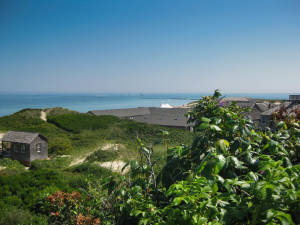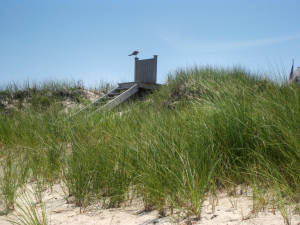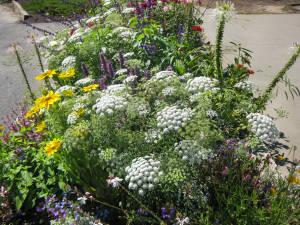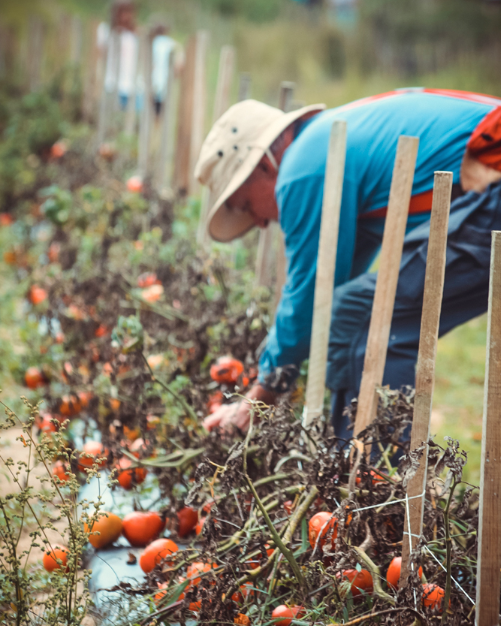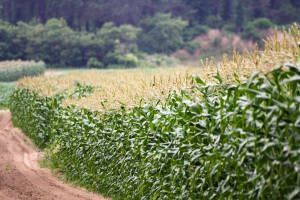
An Insider’s Guide to Nantucket
Thirty miles out to sea from Cape Cod, a lush green island rises up from rocky shoals and is surrounded by barrier beaches. From the air, the island seems sculpted into a half-moon shape, only about 14 miles long. ‘Nantucket’ is actually a native American word meaning “the far away place,” but today the island’s fishing, farming, and whaling traditions are part of a highly accessible, vibrant conservation and environmental community.
Biking for Everyone
Among the island’s most striking eco-friendly features is human-powered transportation: bike riding on Nantucket is de rigueur. Several bike shops on the island will actually deliver bikes to your door, including kids’ seats and trailers.
An amazing web of paved bike trails stretches out to all the major beaches, hiking paths, villages, and shopping areas. Some of the bike trails take you to cranberry bogs, frog ponds, bird sanctuaries, lighthouses, old fishing sites, and panoramic beaches.
It’s a short bike ride, for example, to Steps Beach, not far from Nantucket Harbor where the ferry from the mainland arrives. The beach faces Nantucket Sound to the north and is known for awesome sunsets and graceful cliffs that rise up behind the beach, revealing a series of stunning homes with ocean views and private beach walkways.
Conservation Land
About one-third of the island is maintained as park and conservation areas by the Nantucket Conservation Foundation, which provides public access to many unique sites. The largest conservation area– about 3,200 acres– is called the Middle Moors and is dominated by the Altar Rock hilltop, one of the highest points on the island with great views.
The area around Altar Rock also showcases some of the most typical plants found in the heathland habitat on Nantucket. A variety of of goldenrods and many other wildflowers sweep over the hillsides during the summer. Low shrubs such as huckleberry and low-bush blueberry grow beside Pennsylvania sedge, bearberry, reindeer moss, and false heather. Many miles of trails and and roads crisscross the Middle Moors, with parking areas and several access points from the main roads.
Glorious Gardens and Window Boxes
Even more accessible, by bike or on foot, are the lovely gardens that adorn hundreds of iconic, grey-shingled cottages and larger vacation homes all across the island. Some are tiny corner gardens, others are bountiful borders next to driveways and fences, still others are informal foundation plantings. Local perennial plants including Catmint, Brown-eyed Susan, and fragrant Phlox, fill countless beds, along with pink roses that climb up the sides of houses on trellises. Other plantings often include hibiscus, lilies, verbena, daisies, hollyhocks, and lavender.
Old-fashioned hydrangeas—pink, blue, and white– seem to be everywhere, forming big sweeping borders with the most beautiful giant blooms. Perhaps the sandy acidic soil favors this perennial shrub above all others. Colorful annuals –impatiens and petunias among them– tumble out of charming window boxes that cover storefronts, historic houses, and cottage homes.
Gardening experts at Bartlett’s Ocean View Farm— the oldest and largest family-owned farm on the island—operate a full service garden center with events like “Pick Your Own Flower Bouquets.” Bartlett’s has been selling bedding plants and vegetable plants since the 1960’s. Their greenhouse was built in 1987 and a shade structure was added in the early 2000’s, according to Hilary Newell, Director of Marketing.
Near the entrance to the farm market, several raised flower beds catch your eye. Says Newell, “The raised beds are planted with tulips in spring, then the mixed beds in June and July, then mums and asters are planted, and pumpkins and gourds are added in October. The plants are chosen for tolerance to wind, length of bloom time, and ability to withstand somewhat harsh conditions. Low maintenance is important too.”
Farm-to-Table
The main business at Bartlett’s is the market that sells a wide variety of vegetables grown nearby in their own fields. Seven generations of Bartletts have been farming the same land since the early 1800’s.
“Of the farm-grown produce,” explains Newell, “corn and tomatoes in particular sell well. Hot house tomatoes ripened on the vine are available starting around Memorial Day, corn comes in during July, and the field tomato harvest goes from August through October.” $8.00 will get you a dozen ears of corn picked the same day.
But only a portion of the farm-grown produce is certified organic. “On 20 acres of land that is certified organic by Baystate Organic, about 1/3 of that is in strawberries, the rest is mostly greens and herbs,” notes Newell. “Baby spinach baby arugula, mesclun greens, mixed greens, and about 15 types of herbs with basil and cilantro are the very big sellers.” In addition, there are 12 unheated greenhouses (high tunnels) that are certified organic and used for growing greens and herbs when it’s too cold to grow them outside. “Dollar-wise, income from our organic growing was about 40% of the total harvest income in 2014,” says Newell.
Bartlett’s also tries to source as much regional produce as possible. For example, Carlson’s Orchards in Harvard, Massachusetts, supplies peaches and other stone fruits, and later in the season supplies apples. In recent years, the market has expanded to include prepared foods, artisanal cheeses, groceries, gifts, wine, and more.
Down the road from the Bartlett’s farm and one of the best places to visit on the island is Cisco Brewers–a brewery, winery, distillery, and eatery, all in one place with its own farm garden. Cisco offers daily tasting tours and hosts wonderful live music and casual outdoor picnic-style dining.
Cisco started out as Nantucket Winery, but the Nantucket climate turned out to be bad for growing grapes. So the winery actually concentrates on the fermenting and production side of winemaking, while importing its grapes from growers in California, New York, and Washington. Later, the owners teamed up with a beer-making couple to create a “nano” brewery on the premises –too small even to be called a “micro” brewery. They eventually expanded in 1990’s to include a distillery and more modern equipment.
As the tourist industry grew on the island, so did the facilities at Cisco Brewers. Triple Eight Vodka was the first product to flow into bottles from a tiny new production facility. The owners say that it’s “made from organically grown corn, triple-distilled and blended with ultra pure sand-filtered island water.” The Brewery is open year-round – a fabulous spot to kick back, relax, and truly savor the island experience.


























